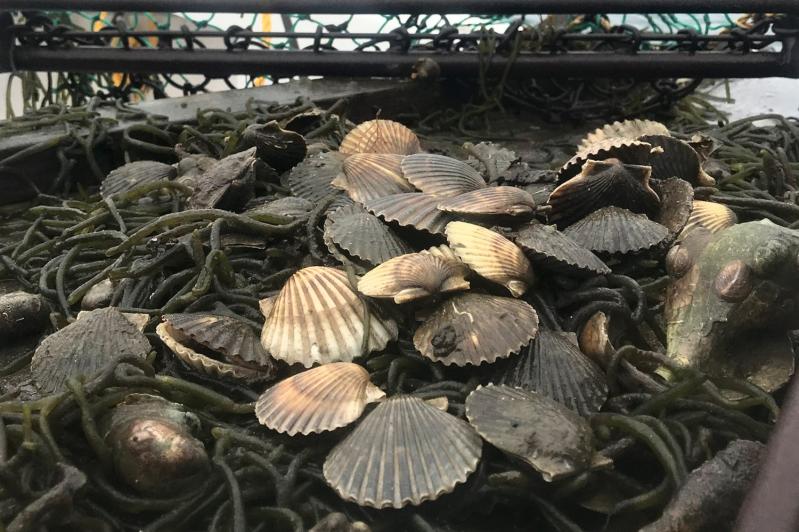The outlook for the bay scallop season, which is set to commence in early November, is once again poor.
For the fifth summer in a row, there has been a significant die-off of mature bay scallops in local waters. It is discouraging for baymen, consumers, and for marine biologists, who continue diligently to follow the ups and downs of the iconic East End mollusk.
“It’s not good news,” said Harrison Tobi, a Cornell Cooperative Extension scallop specialist who recently conducted dives in Flanders Bay, Orient Harbor, and Northwest Harbor. “I found no scallops at Orient Harbor, two scallops in Flanders, and five scallops in Northwest Harbor.”
Mr. Tobi said that population densities for the 2022 cohort (scallops which will be of harvestable age this season) were significantly lower in the 2022 fall surveys when compared to 2021, and significantly lower in the spring surveys in 2023 when compared to 2022.
“Basically, 2022 cohort densities have been low since last fall and were very low all summer, so I am confident saying that the harvestable population densities this season will again be low, similar to every season since the first mass die-off year in 2019,” he observed.
“However, we did see a productive spawn in June, with collection levels of 2023 juvenile scallops being significantly higher compared to collections in 2022 for the same sampling period,” he added.
Mr. Tobi said that the productive spawn in June may have been due to moderate water temperatures during May and early June, which may have promoted reproductive success in adult scallops.
“However, we are now seeing high mortality of adult scallops in our field studies, as well as intense infection rates by the protozoan parasite that is now understood to play an important role in the mass die-offs, in addition to elevated water temperatures and low dissolved oxygen levels,” he said.
“This news totally sucks,” said Danny Lester, a longtime commercial bayman in Amagansett, after I shared Mr. Tobi’s observations with him. “But I was not counting on scallops given what has gone on. There’s really not much else to say.”
Lester did note that he has adjusted his work regimen as a result of the significant decline of bay scallops the past five years. “That’s why I bought a dragger. You need to be versatile these days.”
In October, Mr. Tobi will conduct a fall population survey, which will include 22 dive locations throughout the Peconic Bay estuary system. He said that the survey will provide a much more comprehensive picture of what the harvestable population densities will be for this year’s harvest season, as well as what the juvenile population densities will be prior to overwintering.
Last season, some commercial baymen reported isolated pockets of healthy adult scallops in several areas off the North and South Forks of the Peconics, especially in Lake Montauk to the east, which held a rather robust population of the popular mollusk. Whether that will again occur in November is most uncertain.
I personally gathered a bushel or two last fall in and around Shelter Island Sound, but it took many hours of hard work. I did it out of tradition, rather than income.
The future of our beloved bay scallop is in peril. I’m most skeptical that we will ever again witness the bountiful harvest of years and decades gone by.
—
Fishing tips, observations, and photographs can be sent to [email protected].

